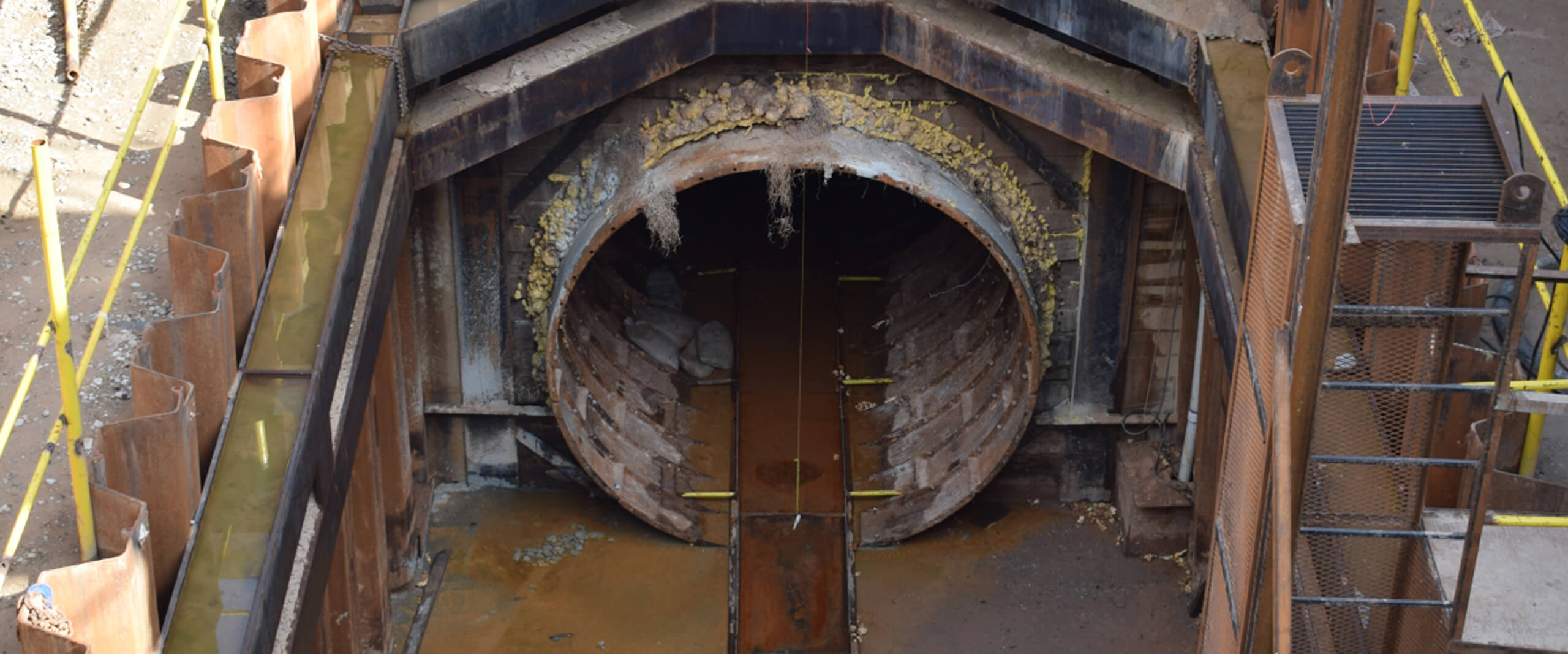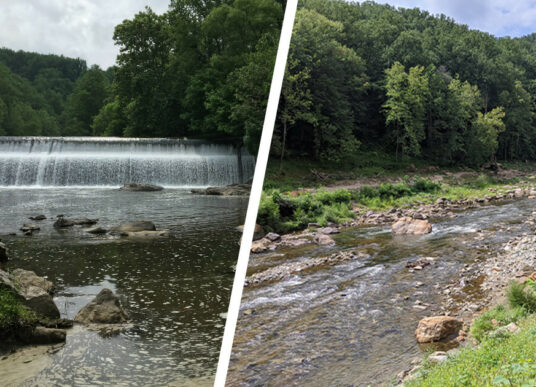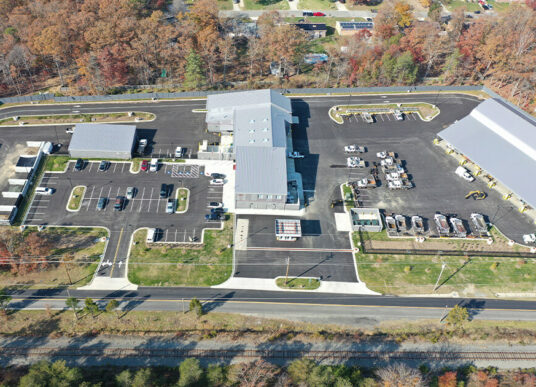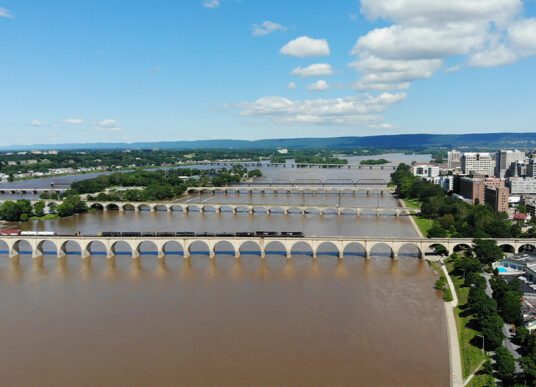Water is one of the most essential resources for a thriving community.
According to the United States Environmental Protection Agency, each American uses more than 80 gallons of water per day. With high amounts of population growth projected over the next several decades and subsequent shortages in potable water, our nation must find new ways to keep up with the increasing needs of our water and sanitation services. Over time, excessive pumping and withdrawal of groundwater can deplete resources and cause the elevation of the land to settle, also known as land subsidence. Throughout the Greater Houston metropolitan area, population growth and land subsidence due to increasing water needs require area water suppliers to reduce groundwater pumping and transition to surface water collection and treatment to meet water demands for 2025 and beyond.
To meet these water supply needs, Houston Public Works officials partnered with the North Harris County Regional Water Authority, the Central Harris County Regional Water Authority, the West Harris County Regional Water Authority, and the North Fort Bend Water Authority to devise a way to direct 365 million gallons per day of additional surface water to Lake Houston and the city’s Northeast Water Purification Plant. As part of this surface water supply initiative, the city of Houston is building a 16.5-mile-long pipeline known as the Northeast Transmission Line (NETL), which will enable transmission of the new surface water supply into the city’s drinking water system and connections to the four regional water supply agencies. KCI was selected to provide program management for all NETL projects in addition to construction management services for two of the 13 pipe segments scheduled to be constructed.
In order to transport the surface water from Lake Houston to the city, multiple municipal utilities and regional water authorities participated in and funded the $450 million NETL construction project. Throughout the six-year construction phase, our team will work alongside Houston Public Works staff to track completion of program budget and schedule goals, provide facilitation for construction management, contractors and design engineers, make coordinated decisions to maintain construction progress, and provide construction documentation to the City and Water Authorities that is consistent quality across all projects.
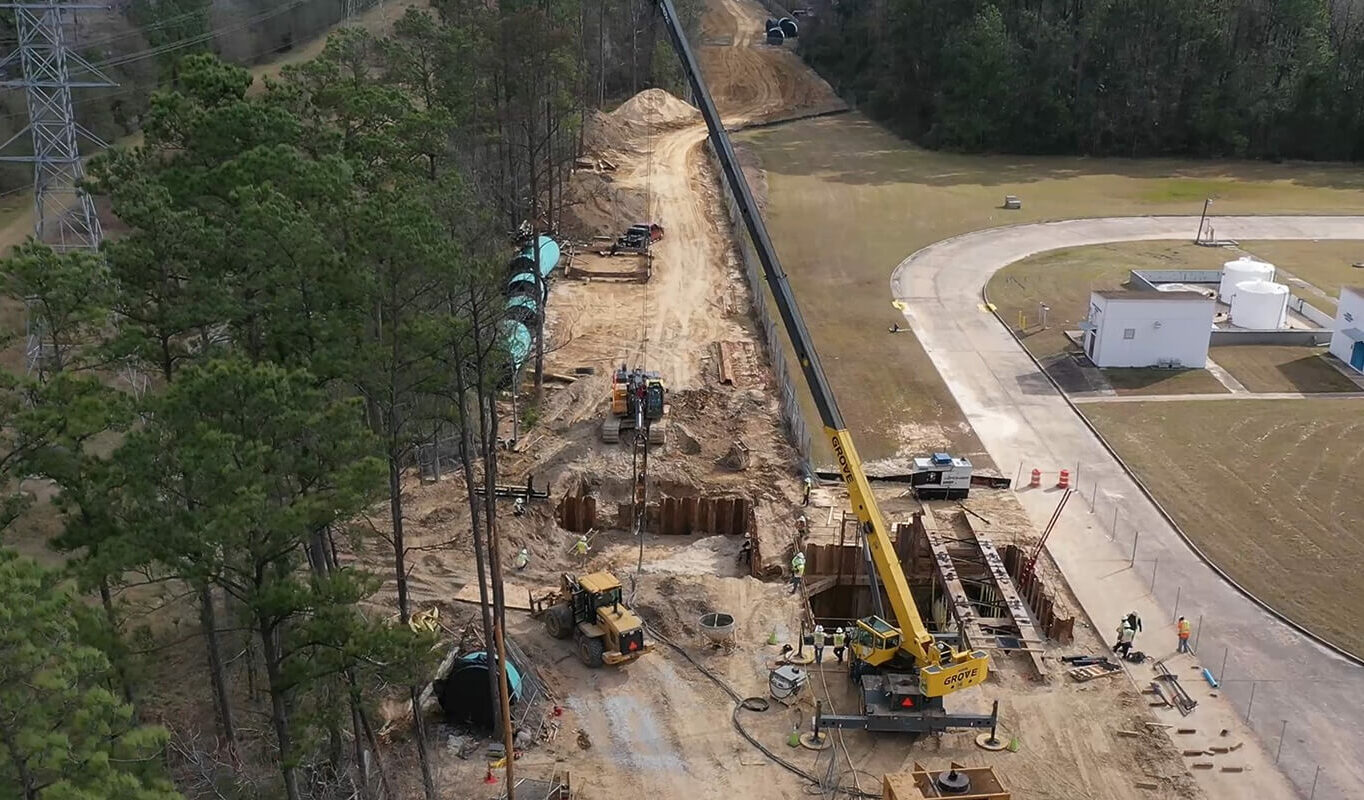 Construction workers dug out massive vaults to prepare the ground for large diameter pipe installation and multi-level permit approval management was crucial to begin the process.
Construction workers dug out massive vaults to prepare the ground for large diameter pipe installation and multi-level permit approval management was crucial to begin the process.Due to the massive size of the 108-inch (9 ft) diameter pipeline transmission, construction was split into segments to allow for multiple contractors to perform work simultaneously across the region. Each segment can take up to two years to complete, making it impractical to build the pipeline one section at a time. The process of pipe installation often involves the open-cut method, requiring traffic diversion, digging through the ground’s surface, excavating a tunnel, placing the steel cylinder pipe on compacted embedment and backfilling the opening. As conventional techniques are challenging in an urbanized environment because of many existing utilities and high traffic volumes, it was necessary to tunnel beneath roadways and other obstacles in the project path. Due to the level of complexity involved, consistent coordination became essential to the pipeline’s successful installation. To rectify the complications that arose during the project timeline and stay on schedule, our team was often called on to coordinate between contractors, resolve problems and provide recommendations to the city.
One such challenge arose as multiple sections of large diameter pipe were isolated by finishing ahead of the connecting waterlines and therefore were unable to be placed in service and be properly disinfected without the rest of the pipeline being completed. Without water with sufficient chlorine concentrations continuously flowing through the pipeline, microbiological growth would form in the liner, which would damage the pipe. To combat these obstacles, KCI assessed the risks of alternative solutions, compiled them into a report, and presented them to the city’s project management team to discuss potential options. This assessment tool, known as a risk register, identified the benefits and concerns that each approach would have on the project. Our team then worked with the city to develop a plan that allowed the pipes to safely remain dormant until the other sections were completed, accomplished by allocating water from nearby fire hydrants and leaving the lines filled while administering occasional chlorine injections to prevent microbiological growth.
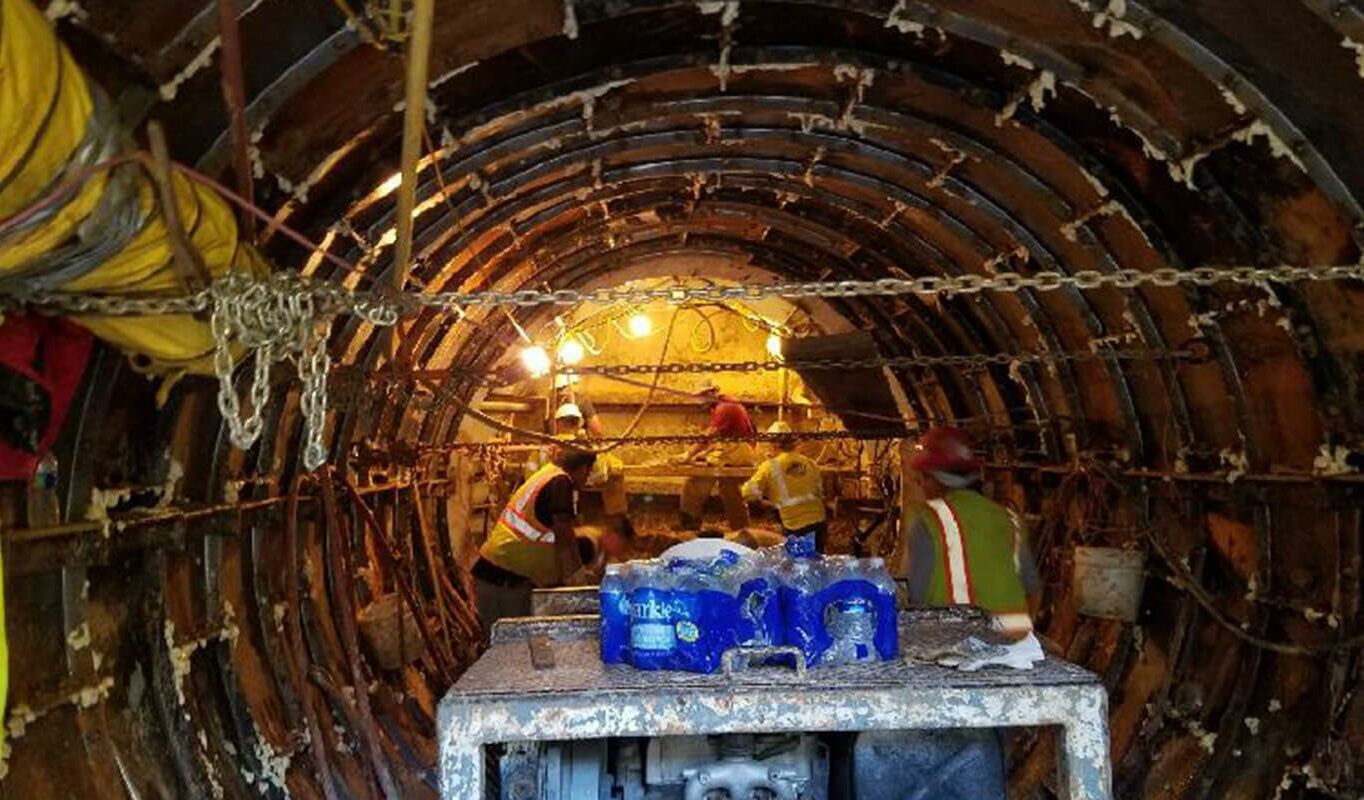 Crews hand tunneled sections of the waterline for 108-inch pipe insertion, making smooth coordination between every contractor necessary for success.
Crews hand tunneled sections of the waterline for 108-inch pipe insertion, making smooth coordination between every contractor necessary for success.To facilitate clear communication throughout the complex venture, the crew identified individual roles for each team member and implemented reporting structures across all contracts. A GIS map was created for project managers to track progress. The city of Houston’s CIPMS system is used to track construction documentation, and a program collaboration dashboard was built to display relevant data and host risk management and project forms, standard operating procedures, and employee training manuals. KCI also developed a field inspection training program to support the frontline of construction efforts, training construction inspectors to oversee the project through monitoring daily activities, tracking project controls, and preparing high-level report documentation.
“KCI is continuously looking for ways to help improve training of large diameter inspections and has made it a priority to provide consistency for both stakeholder communication and construction documentation. These efforts have allowed our team to maintain the City of Houston’s construction budget and schedule goals.”
– Kathy Berek, PE, ENV SP, Regional Practice Leader, Vice President
In addition to managing communication between project team members, KCI also provided monthly reports to the City. Our team regularly visited the project sites to assess the progress being made via aerial inspections and drone flight video recordings. These videos were edited for City staff and project stakeholders to easily view the development for each segment of the transmission and discuss any concerns with coordination along the pipeline. They were also utilized during monthly meetings with stakeholders to help keep them informed of the projects’ progress.
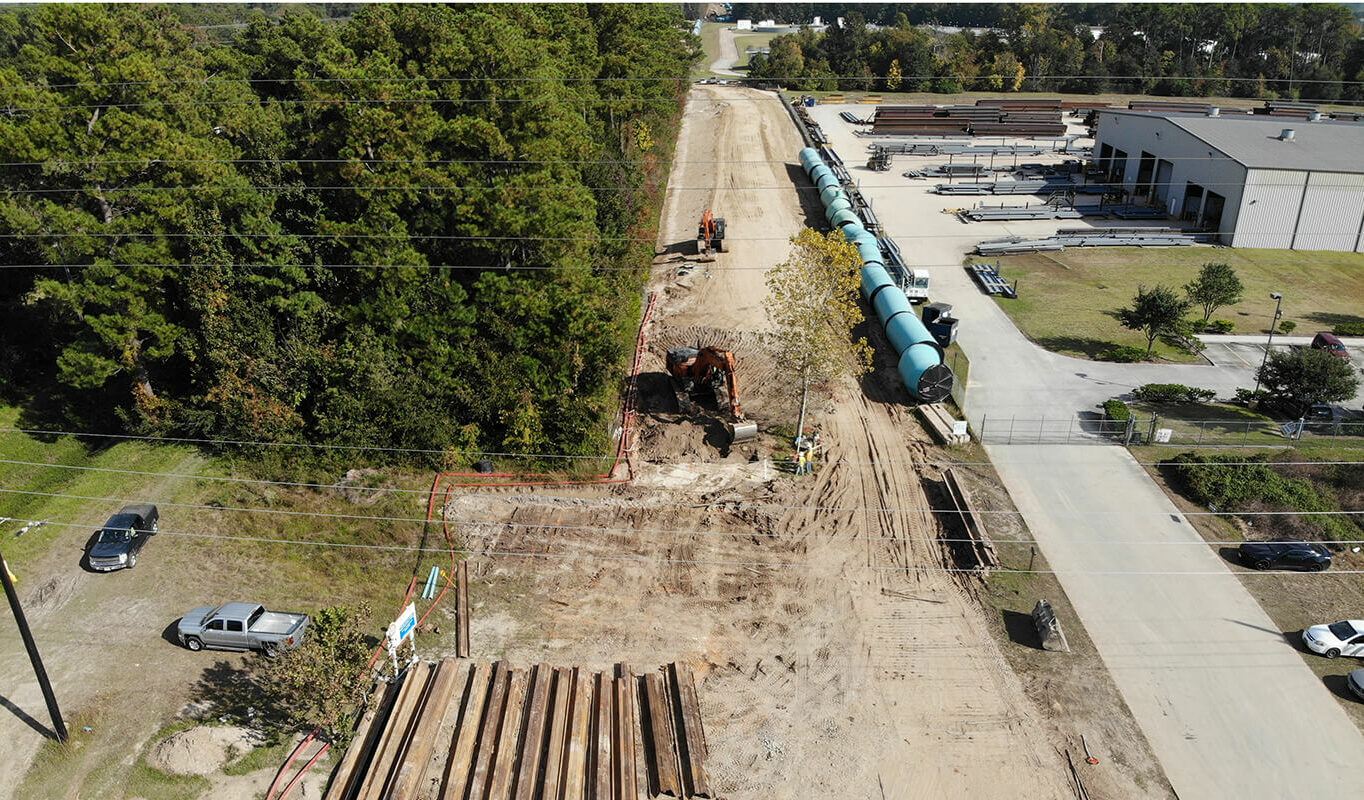 Ongoing visual reports enabled the client and stakeholders to stay up to date on project development in real-time.
Ongoing visual reports enabled the client and stakeholders to stay up to date on project development in real-time.This massive undertaking has remained on budget and ahead of schedule thanks to the many levels of coordination between the project management team and the City of Houston representatives. With established training programs, extensive progress reports, real-time GIS dashboards and an all-hands-on-deck approach, KCI is leading the way to sustainable water sourcing in Texas for years to come.
